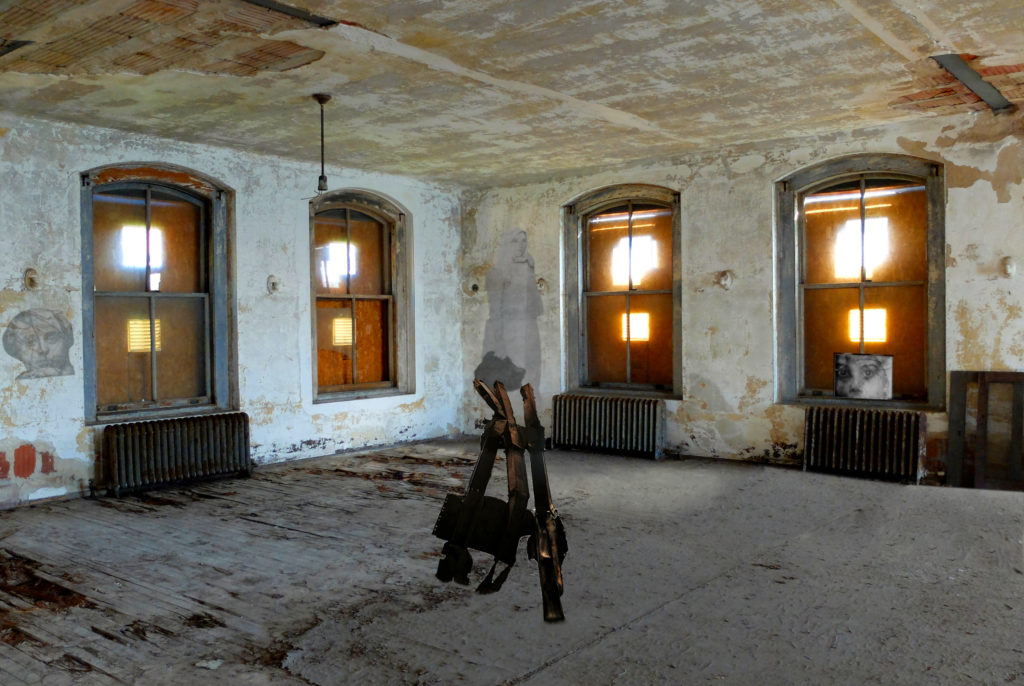Were immigrants arriving in Ellis Island resilient? They survived pogroms, misery or starvation. They had to pass through dreadful sanitary checks, could be quarantined and sent back home. Their living conditions were the worst possible we could think of. Though, this was heaven compared to where they were coming from. Could they imagine after nearly a century of major innovative breakthroughs, health and social improvements, that their progeny would confront with such level of vulnerability of which responsibility lies primarily in our hands; a vulnerability reaching a culminating point in a high-rise tower obsession downtown NYC, ignoring future flooding and forgetting Sept. 11th.
Is the past a foreign country? Did our environment develop in such a way that we became unable to learn from our cultural heritage?
Beyond the richness of a concept with multi-faceted dimensions and the emptiness of a word used nowadays to mean anything, resilience, when applied to our daily lives, questions the balance between individual acts and collective responsibility. In this respect, it is worth to realize that if we cannot ignore the way individual resilience may nurture urban resilience, confusing people capacities with the practices needed to cope with socio-economic hardship is at best ambiguous and at worst a pitfall that we should avoid.
An abundant literature reviews the difference between being forced to respond to threats out of necessity and the role of normative approach fighting for social justice. But the argument featuring the danger of confusing the outcome of an innate ability with a social process helping to achieve urban resilience is not always explicit. To put it clearly, how bridged or bounded are individual, collective and urban resilience? Is there any way to move from one to the other and at which conditions?
P. Eachus (1) provides a first answer to the question “Is Community Resilience greater than the sum of the parts of individual resilience?” showing the need for the community to provide resources and support structures. Though, fostering a collective identity and a shared sense of purpose should be seen as a necessary but not sufficient condition. In a remarkable paper, D.P. Aldrich (2) considers the specificities of bonding, building and linking ties and how each of them contributes to display community resilience. Each link is related to the social capital needed to build trust. Bonding social capital will aim to build reciprocity amongst homogeneous individuals and bridging activities will enlarge to different neighborhoods. While bonding and bridging ties perform “horizontally”, linking social capital will enable vertical “networks of trusting relationships between people who are interacting across explicit, formal or institutionalized power or authority gradients in society” (2). Referring to the works of Chamlee-Wright in understanding how neighborhoods and societies respond after crises, D.P. Aldrich views offer a valuable insight on how collective resilience can be built in such situations. Though, the arguments fall within a linear thinking system that does not account for the full complexity of urban systems. And at this stage, the way collective resilience may provide the seeds of urban resilience remains an open question.
Many authors have described the complexity of urban environments, analyzing urban disruptions and how they should be viewed in time and space. The number and the nature of changes affecting our urban lives would probably be conflictual without the trade-offs needed to implement urban resilience. S. Meerow & JP. Newell (3) provide a clear approach of the conditions entailing a critical non-linear thinking shaping the process. Referring to the 5 W’s (for whom, what, when, where, and why?) the authors explain how an iterative three-phased approach centered on the answers to the 5 W’s intertwines with urban resilience seen as a boundary object and its implementation in urban spaces.
A critical thinking is a necessary condition to face the complexity of urban systems and the uncertainty of our changing world. The capability to reconsider what may be taken as granted plays a key role in a neo-liberal environment that encourages the idea of active citizenship at the expense of welfare state missions. The myth of the “American dream” translates into a heroic perception of resilience with potentially devastating consequences reviewed by Pedro Estêvão & Al (4). Individuals coping with adversity are too often presented by politicians as a model of efficiency in a way that could legitimize a retrenchment of social policies. As stated by the authors, resilience practices are neither created nor operate in a social or environmental void. Like any type of human action, the space of possibilities for resilience is shaped by both the social structure and the natural environment, even if such practices may in the long run influence and transform the latter two. Nonetheless, individual critical thinking capability should be seen as an asset to build on urban resilience. Cities have no worth other than what urban citizens are aiming to. But for the majority of us, understanding urban resilience is not an innate gift. Facing the threats of a changing world where surprise is likely (5) questions the pedagogy needed to empower citizens as full stakeholders in the way urban resilience can be implemented.
The below work shows the inside room of an Ellis Island dwelling. Windows have been covered with wooden planks, each of them having an opening letting the light in. Walls display old photographs of immigrants who went through immigration controls. In the center of the room, linking past to present, stands a twisted piece of metal originating from the twin towers.

- https://doi.org/10.1016/S2212-5671(14)00949-6
- https://cosmosandtaxis.files.wordpress.com/2014/05/sieo_4_2011_aldrich.pdf
- https://www.researchgate.net/publication/305220908_Urban_resilience_for_whom_what_when_where_and_why
- https://core.ac.uk/download/pdf/302958181.pdf
- https://doi.org/10.5751/ES-09088-210444